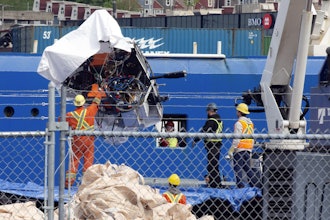
BELLWOOD, IL – A federal workplace safety inspection found a Chicago-area candy manufacturer’s long history of violations for machine safety requirements continues after the company exposed workers to amputation hazards and failed to utilize lockout procedures for the third time in five years at its Bellwood site.
The U.S. Department of Labor’s Occupational Safety and Health Administration has issued citations to Ferrara Candy Co. for one repeat violation and four serious safety violations, with proposed penalties of $201,379, after responding to an April 4, 2022, complaint of unsafe working conditions. OSHA inspectors found workers exposed to amputation hazards because the company failed to utilize energy control procedures – such as lockout/tagout – before workers cleared jams and serviced equipment.
“Ferrara Candy Co. knows its workers can suffer debilitating injuries, such as amputations, when machines are not properly de-energized before servicing or maintaining them,” said OSHA’s Chicago North Area Director Angeline Loftus in Arlington Heights, Illinois. “Yet, company personnel continue to expose employees needlessly to these hazards. OSHA will continue to hold manufacturers accountable for using safe work practices, including lockout.”
In addition to citations for failing to provide specific lockout/tagout procedures, OSHA cited the company for not providing access to an eyewash station and for allowing workers to operate powered industrial vehicles while in disrepair.
OSHA’s machine guarding and control of hazardous energy web pages provide information on what employers must do to limit worker exposure to machine hazards.
Based in Chicago, the Ferrara Candy Co. manufactures non-chocolate confectionary products and employs workers at manufacturing facilities across North America.
The company has 15 business days from receipt of its citations and penalties to comply, request an informal conference with OSHA’s area director, or contest the findings before the independent Occupational Safety and Health Review Commission.






















